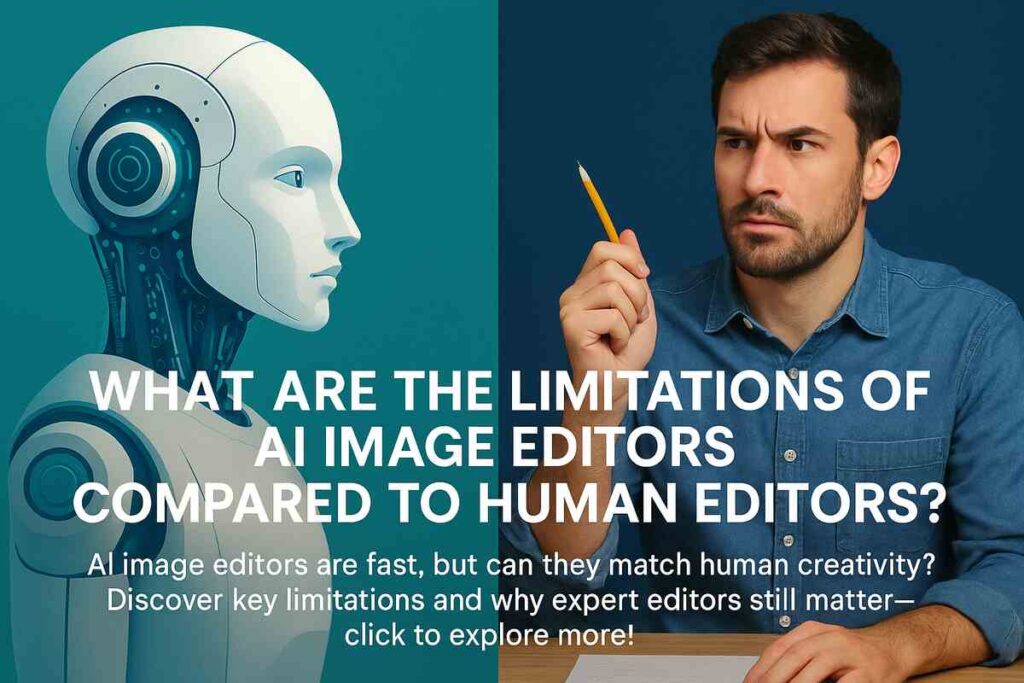Offering quick, easily available, and automated solutions for image enhancement and design, artificial intelligence image editing tools have had a major influence in the creative industry. Particularly with non-professional users and content creators, sites that include an ai editor online have grown increasingly well-liked. High efficiency and user-friendly interfaces of these tools enable nearly anyone to create decent-quality graphics. Still, AI image editors have significant shortcomings when compared with expert human editors even as their capabilities expand.
Absence of Creative Intuition
One of the main drawbacks of an online artificial intelligence editor is the lack of creative insight. Human designers give their projects context, personal experience, and creative taste. Using delicate narrative, feeling, and cultural currents, they make judgments. Conversely, artificial intelligence uses algorithms and rules founded on current information. Although it can make suggestions or mimic designs, it does not really “grasp” the artistic purpose behind an image. The results could therefore seem flat or lacking in emotional depth.
Human editors can create imagery that connects with particular audiences, purposely shatter design standards, and push creative borders. Their programming and training data constrains their capacity to innovate or adapt in real time, hence limiting AI tools.
Complex Context Challenges
Another field where artificial intelligence systems fall short is context. Although an AI editor online can improve images or advise filters, it might not quite understand the goal behind the design or the message the image has to send. Subtle elements such facial expressions, background components, or lighting cues have significant narrative importance in photojournalism or editorial work. Many times, artificial intelligence lacks the sensitivity needed to maintain these subtleties throughout editing.
Human editors may analyze the whole image in a bigger perspective. They can recognize the emotional tone, social significance, or storytelling devices buried inside the image. AI systems just improve what they see as visually pleasing, which could result in over-editing or tone-deaf visual outcomes.
Little Modification in Particular Contexts
Though an artificial editor online excels at simple and repeated chores like background removal, resizing, or color correction, it frequently has trouble with projects requiring highly specific customization. Customers might, for instance, ask for light retouching of facial characteristics, creative effects to fit brand identity, or repair of elderly, damaged photographs of personal importance.
Human editors provide flexibility and accuracy in these situations. AI systems usually work within predetermined bounds, hence it is challenging for them to manage unexpected or complex requests that go beyond their designed capabilities. They can interpret abstract feedback and generate visual changes fitted to the client’s needs.
Dependence on Presets and Templates Too Much
Many ai editor online solutions enable consumers to quickly produce polished images by means of prefabricated templates and automated presets. Though this enhances efficiency, it also produces identical or repetitive visual patterns. These resources can be limiting for companies or people seeking to stand out with an original design.
In contrast, human designers can create images from scratch, giving their work character and originality. By hand, they can match every element to fit a particular tone, campaign, or creative vision. In contrast, artificial intelligence promotes simplicity but occasionally gives up originality in the process.
Inability to Interpret Abstract Feedback
Feedback like “make it feel warmer,” “add more energy,” or “tone it down a bit” can be easily understood by a human editor. These subjective instructions are based on mood, audience, or message—factors that an ai editor online cannot interpret effectively. AI tools require clear, defined commands and lack the capacity for human empathy or emotional interpretation.
This becomes a critical limitation in collaborative environments such as marketing, advertising, or editorial work, where feedback is an essential part of the creative process. Human editors thrive in such situations by offering flexibility, iteration, and a deeper understanding of abstract creative direction.
Conclusion
AI has transformed the editing landscape by making tools more accessible and efficient. Platforms featuring an ai editor online provide valuable resources for quick, everyday editing. However, when it comes to creativity, context, and complex customization, human editors still hold the advantage. AI tools are excellent assistants, but they have not yet reached the level of insight, flexibility, and artistic judgment that skilled humans bring to the editing process. As technology continues to evolve, the most powerful results will likely come from a blend of both—AI-driven efficiency combined with human creativity.

